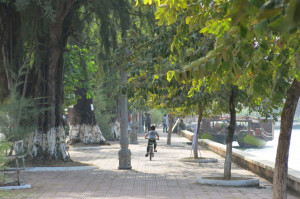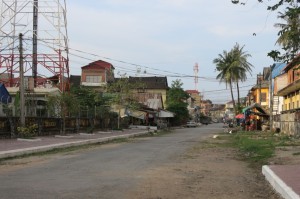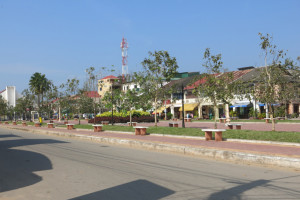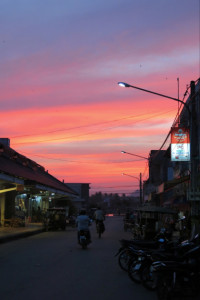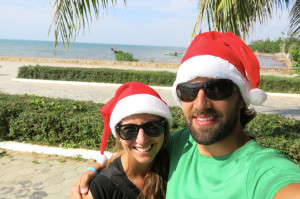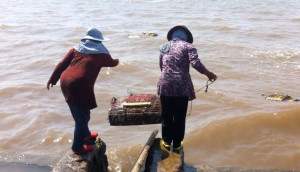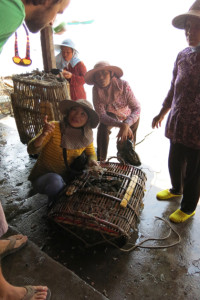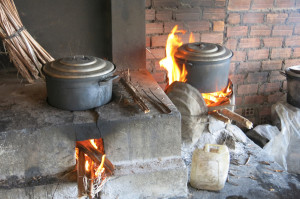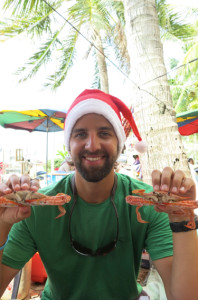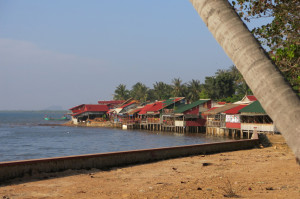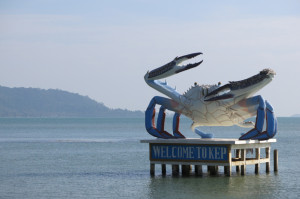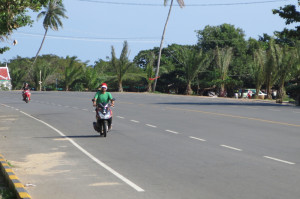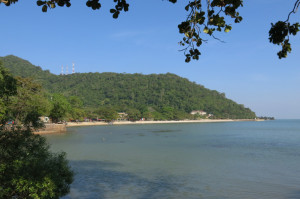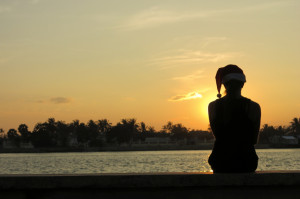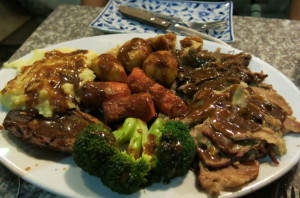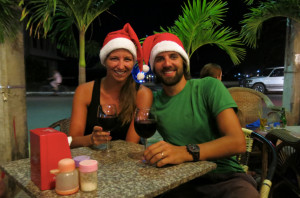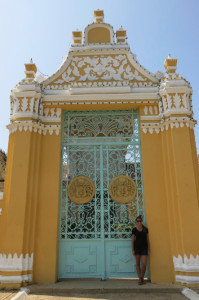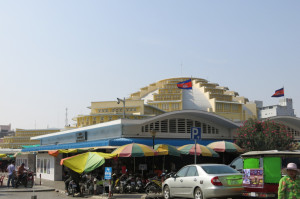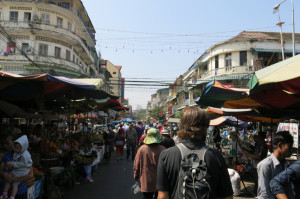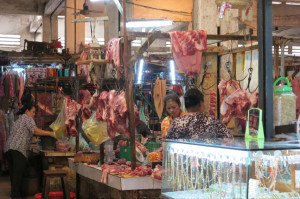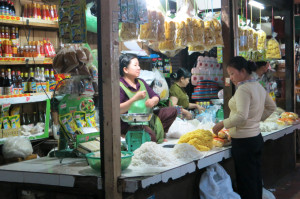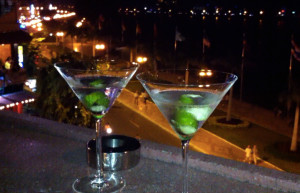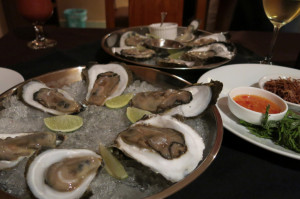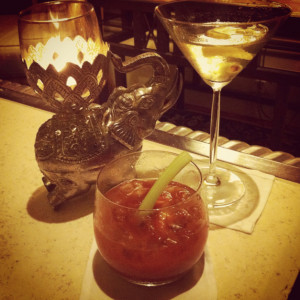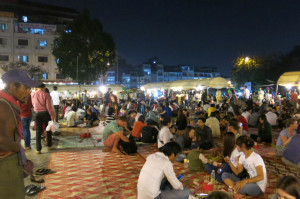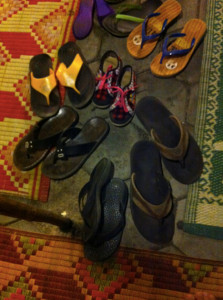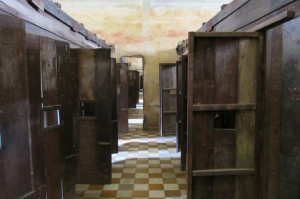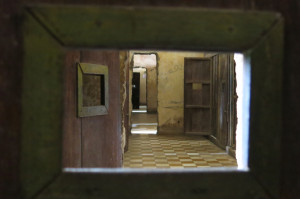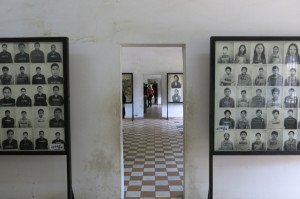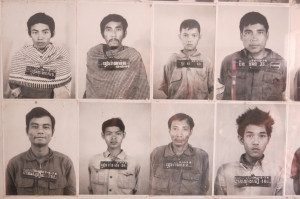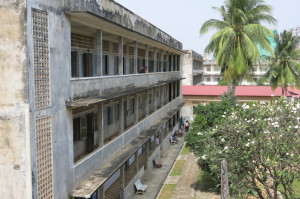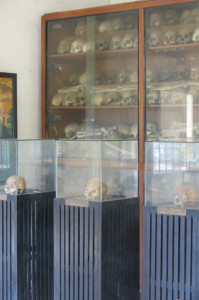Intro to Cambodia: From Coast to Capital
by Dave
December 24 – 29
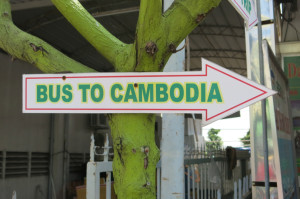 Despite our desire to stay even longer, I guess we had to leave Vietnam at some point (EDITOR’S NOTE: We log endless miles on your streets and alleys. We meet your families. We eat Pho at your tables (like all of them). And THIS is the thanks we get? I thought we were forever, Vietnam.). We reluctantly said goodbye after using up our visas to the final day of validity, and it was time to move on… to Cambodia. We went in with as open a plan for the coming weeks as we have had at any point of our trip. But we did know that we would start in Kampot, a small city on the southern coast of Cambodia that was conveniently just about an hour and a half from the border crossing with Vietnam, and spend at least a couple days exploring the charming city and its seaside neighbor, Kep.
Despite our desire to stay even longer, I guess we had to leave Vietnam at some point (EDITOR’S NOTE: We log endless miles on your streets and alleys. We meet your families. We eat Pho at your tables (like all of them). And THIS is the thanks we get? I thought we were forever, Vietnam.). We reluctantly said goodbye after using up our visas to the final day of validity, and it was time to move on… to Cambodia. We went in with as open a plan for the coming weeks as we have had at any point of our trip. But we did know that we would start in Kampot, a small city on the southern coast of Cambodia that was conveniently just about an hour and a half from the border crossing with Vietnam, and spend at least a couple days exploring the charming city and its seaside neighbor, Kep.
Kampot & Kep
Prior to the horrendously oppressive and destructive rule of the Khmer Rouge in the 1970’s (more on that later), Kampot and Kep were beautiful getaways for the Cambodian elite. With remnants of the gorgeous French Colonial architecture all around, and the warm waters of the Gulf of Thailand lapping against its shores, you can understand why. Today, these two small cities are in search of a way to restore their past prominence, but to characterize them as struggling and not worth a visit would be false.
One thing we’ve discovered about ourselves is that while we love us some big cities (see Barcelona, Istanbul, Hanoi and others), we equally desire sleepy towns to decompress in. Kampot and Kep would both fall into the latter group (EDITOR’S NOTE: Like WAY fall into. Like started the “sleepy town” clique in high school.). In places like these, you’re afforded the luxury of not having to plan anything in advance and still finding it easy to see just about everything and do whatever your heart (and/or wallet) (EDITOR’S NOTE: and/or stomach…) desires. Even on Christmas. So upon checking into our room at Kampot’s Magic Sponge Guesthouse (a spot we’d highly recommend to any future visitors) on Christmas Eve, we set out on the town to explore. And about 30 minutes later, we’d seen it. Almost all of it. Or, at least enough to realize we made the right decision to start our time in Cambodia here.
Noelle alluded to this in her Saigon post, but we didn’t have as hard a time missing Christmas as we thought we would. Don’t mistake that for a lack of holiday spirit on our part though – we still found time to watch Polar Express on Netflix on Christmas eve, hang a handmade quilted ornament we received from Grandma Overly on a palm tree and even hear a surprise, rousing rendition of The Night Before Christmas from one Lynnette Overly via Skype (control your jealousy) (EDITOR’S NOTE: Or don’t. Either way you can’t have her – she’s MINE ALL MINE. MWAHAHAHAHH!). Ah, technology and the simple things, amiright or amiright?
Our loneliness and any hint of Christmas-away-from-home blues were avoided thanks to the fact that we had filled our Christmas day with some activities to take our mind off the fact that we were so far from friends and family.
We were determined to make the holiday memorable, so after our afternoon of exploring Kampot on foot and finding a quiet place to enjoy some Khmer Curry and Lok Lak (both Cambodian staples) for Christmas Eve dinner, we nodded off with visions of sugar plums crabs dancing in our heads. Yup, crabs.
The next morning we donned our Santa hats (best $2 purchase of Vietnam) and hit the open road for a motorbike ride to Kep’s famed Crab Market. Kep is even smaller than Kampot, and the market is the main show in town. Being right on the water, it makes sense that the seafood is amazing. Combine the notorious crab with the equally notorious Kampot pepper, and we had one of our best lunches of recent memory.

Then we found the Fruit Ninja on our way out. I asked if she knew about my high scores (NYE 2012, amiright?), but the Fruit Ninja doesn’t talk to strangers.
Just as the gas gauge was teetering below the empty line, we pulled back into Kampot in time for our Christmas feast. For that, we picked the Rusty Keyhole, a place that looks exactly like what you think it would, that was serving a set menu Christmas dinner that included lamb, pork, mashed potatoes and a few other hearty eats we hadn’t tasted in months. It was glorious.
And to make things even better, we stumbled into a conversation with a couple from NZ that is similarly in the midst of a year-long career break to travel. This, after delicately leaving one where two drunk ex-pats insisted we were Jennifer Aniston and Patrick Rafter, harassing us until we signed napkins as such. NZ for the win!
Phnom Penh
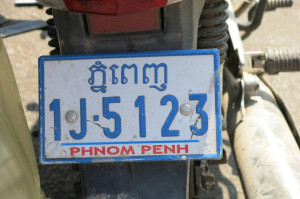 It was short and sweet, but Kampot and Kep provided a great intro to Cambodia. But before our two days turned into two weeks (apparently that’s a common problem for Kampot visitors who get sucked in by the sleepy vibe), it was time to move on yet again. This time to Cambodia’s capitol – Phnom Penh.
It was short and sweet, but Kampot and Kep provided a great intro to Cambodia. But before our two days turned into two weeks (apparently that’s a common problem for Kampot visitors who get sucked in by the sleepy vibe), it was time to move on yet again. This time to Cambodia’s capitol – Phnom Penh.
It was quite a contrast from our first stop – where Kampot and Kep are quiet and relaxing, Phnom Penh is loud, loaded with traffic and stressful to navigate as we unavoidably discovered as we first got off our bus.
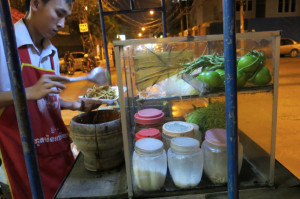 Thankfully we found a cheap and “good enough” room before easing into things our first night. Our collective indecision was peaking as neither of us could commit to any specific place for dinner when dinner finally found us instead. A papaya salad stand on wheels, to be more specific. We have still yet to find one as good as this first time.
Thankfully we found a cheap and “good enough” room before easing into things our first night. Our collective indecision was peaking as neither of us could commit to any specific place for dinner when dinner finally found us instead. A papaya salad stand on wheels, to be more specific. We have still yet to find one as good as this first time.
It’d be a stretch to consider Phnom Penh a walking city. Yes, you can walk around it (as we did). But it’s a pretty effing long way to walk from one end to the other. We found this out when we decided to tackle the Central Market and Russian Market on the same day. Both markets are pretty large, having to house numerous stalls offering butchered meats, prepared foods and drinks, clothes, shoes and other goods.
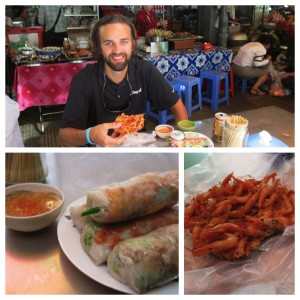
Naturally we found the food vendors for some fresh spring rolls and some sort of baby shrimp pancake, both of which were delicious.
They can be a bit intimidating for some, but by this point we had been through numerous markets throughout Laos and Vietnam so we weren’t too fazed. A new tactic was used here that we hadn’t seen as much in previous stops though. Instead of just a standard “hello” or “you want buy something?”, Cambodian vendors opted to save their breath and combine the two which resulted in Noelle’s Cambodian alter ego – Lady Buysomething. Everywhere we’d walk by, we’d hear pleas of “Lady Buysomething.” It was amazing. Annoying at first, but amazing and entertaining in the end.
And following the standard expat tradition, we joined the leagues of happy hour seekers at some of the more notable scenic establishments for cold, refreshing beverages.
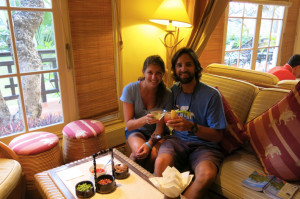
Kept the happy hour train rolling the next day, treating ourselves to a couple half-priced beverages at the famed Elephant Bar in the Hotel Le Royal.
In between some longgggg walks weaving our way around the city between the shores of the mighty Mekong River and the major markets, we came to like Phnom Penh. Trouble is, we’re not so sure it was equally fond of us after our long run of street food good luck ran out during a trip to the night market for dinner.

We didn’t have the courage to eat these fried little birds, but they couldn’t have been worse than what we did eat.
Dabbling in another papaya salad and some sort of noodle dish (in hind sight, the mystery meat and sauces probably should have been a red flag), Lady Buysomething and I both woke up the next day feeling, shall we say, “under the weather.”
But, after a quiet day that included our leaving the room just two times to grab small snacks (in addition to the hidden benefit of our sub-par health: cranking through many episodes of Breaking Bad), we were feeling up for some activity the next day.
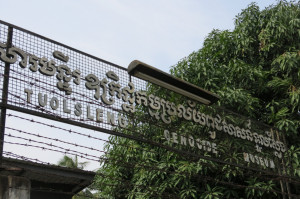 So on our last day we headed into the city for a necessary stop at the Tuol Sleng Genocide Museum, also known by its previous name, S-21 Prison. The museum provided an accurate (and rightfully graphic at times) depiction of the horrors that Cambodians endured less than 40 years ago.
So on our last day we headed into the city for a necessary stop at the Tuol Sleng Genocide Museum, also known by its previous name, S-21 Prison. The museum provided an accurate (and rightfully graphic at times) depiction of the horrors that Cambodians endured less than 40 years ago.
I have to admit that I had never really heard of the Khmer Rouge’s destructive Nazi-like rule from April 1975 to January 1979 prior to our planning and research for this trip. But it warrants much more education than it’s garnered abroad for the incomprehensible genocide committed against innocent Cambodians.
The regime won a civil war in the 1970s and promptly cleared out the capital city to “cleanse” the nation of what they viewed as threats – or what any other sane person would view as educated people. Over the course of four horrific years, an estimated 1.7 million people (more than 20% of the Cambodian population at the time) were arrested, tortured, murdered or met their end through disease or starvation during the Khmer Rouge rule. And Security Office 21 (as it was referred to during those years) was the center of this real-life nightmare. According to the museum, the prison was set up for “detention, interrogation, inhuman torture, and killing after confession.” Of those that didn’t find their end in the prison, many were taken 11km outside the city to the Choeung Ek killing fields where they were murdered and dumped into mass graves.
If ever I’ve had a more sobering experience than walking through this real life hell, I’d be hard pressed to recall it. There are gallows still intact on display, small holding cells, and rooms displaying the headshots of victims (many of them women and children) as well as one room with the skulls of many victims on display behind a thin, Plexiglas windows.
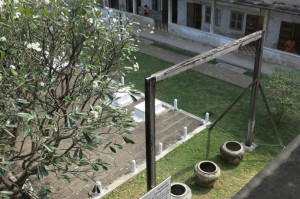
The gallows that were used. Prisoners were hung by their feet until they lost consciousness, then had their heads submerged in water-filled pots below to wake them up for more interrogation and torture.
It was a depressing and sobering experience to go through just before leaving, but one we’d highly recommend to anyone going to Phnom Penh so you can start to understand what Cambodians have all gone through in some way, shape or form in the not-so-distant past.
After recounting the event’s of Cambodia’s past, it was time to move on in the present as we were off to explore Siem Reap, the Angkor temples and more of this historically rich country.

